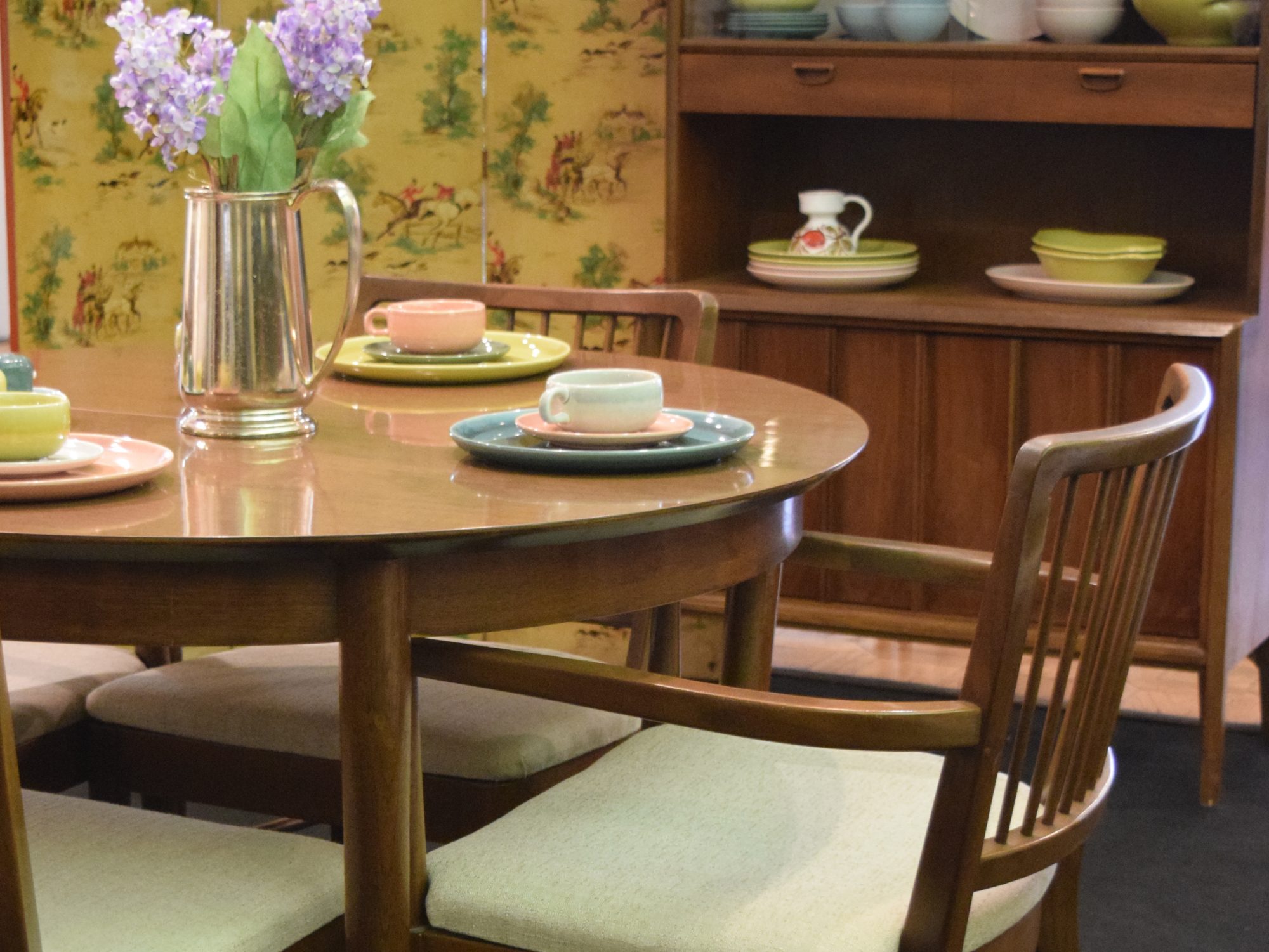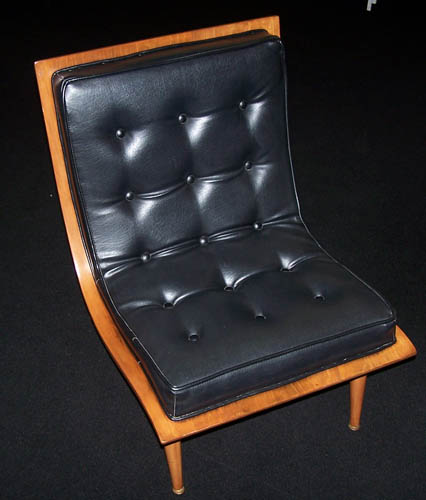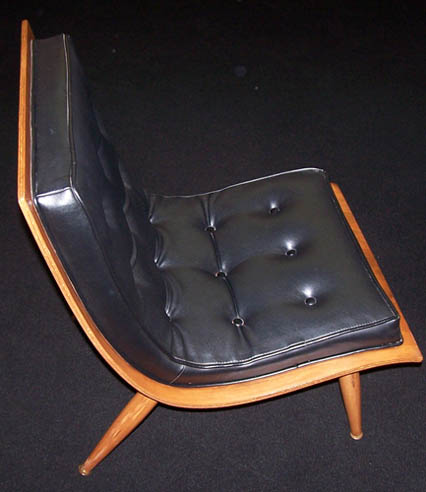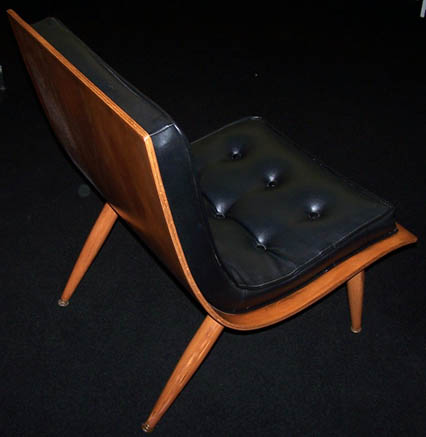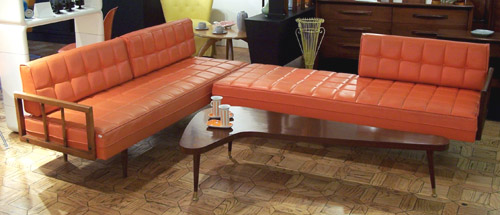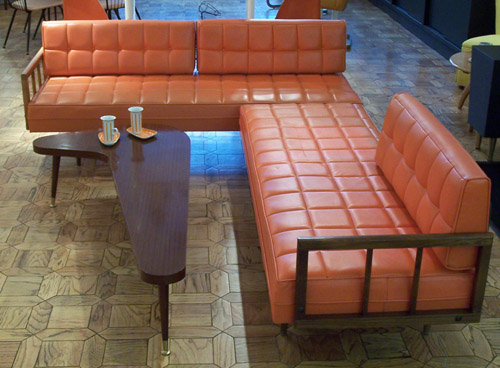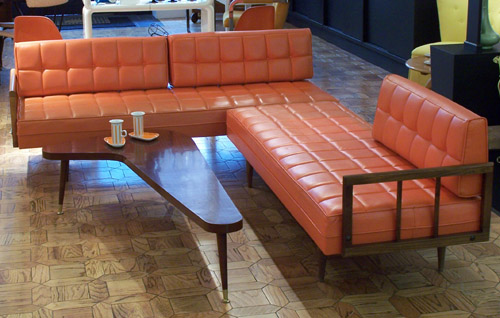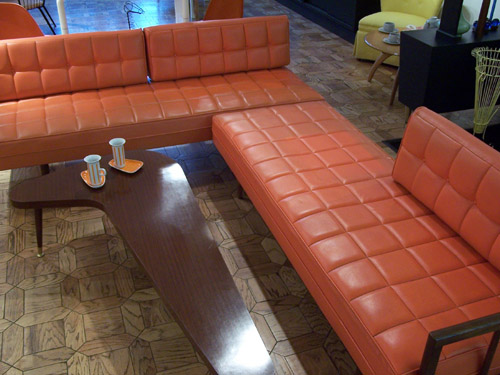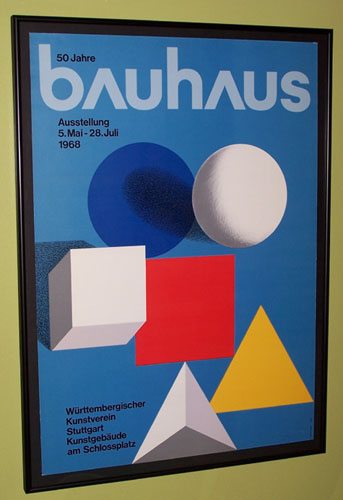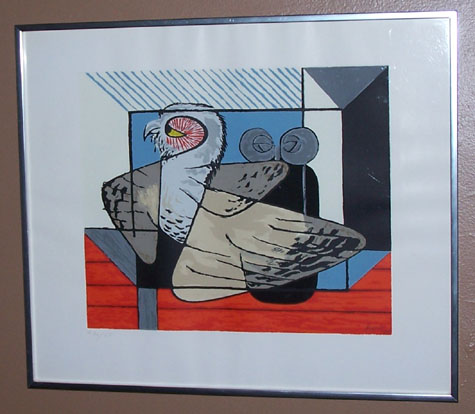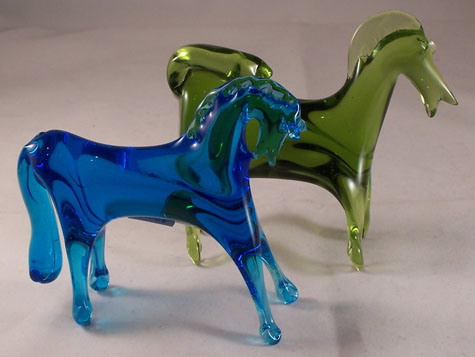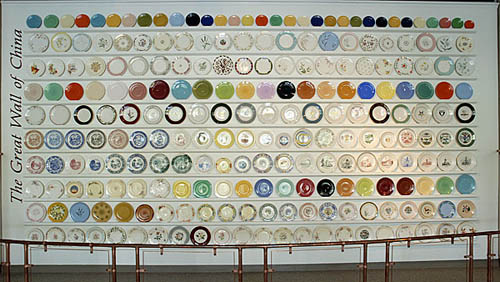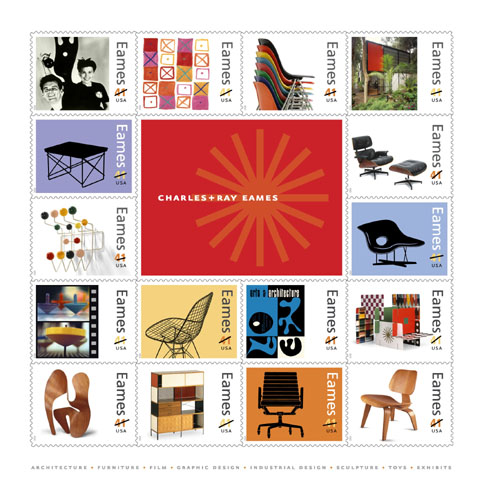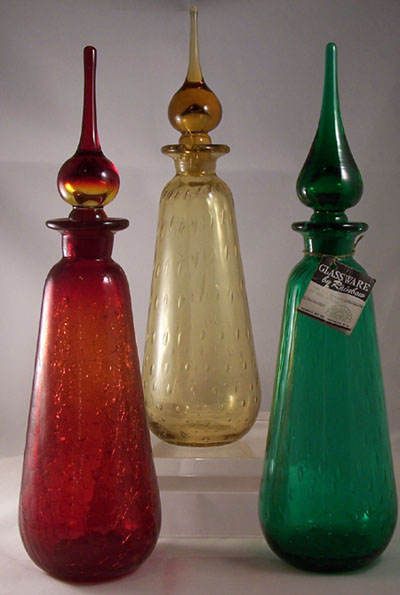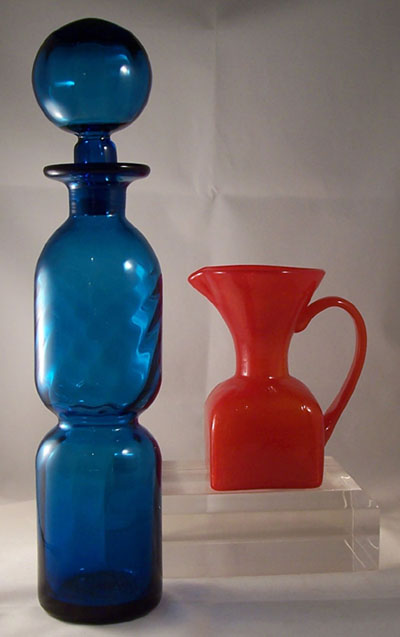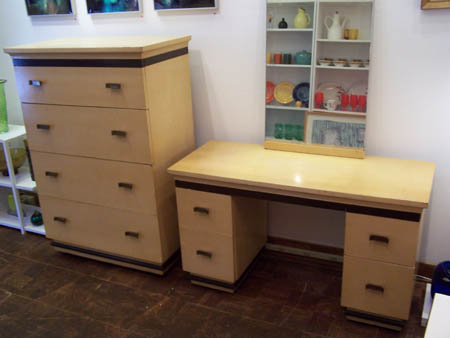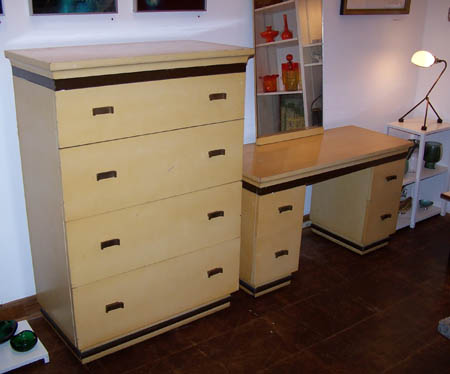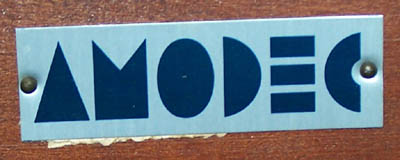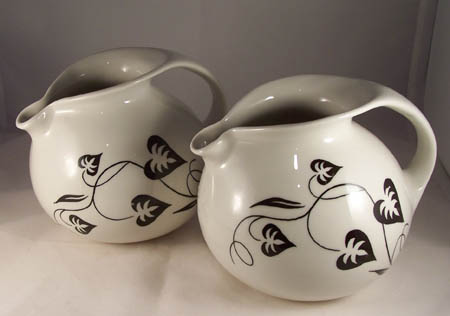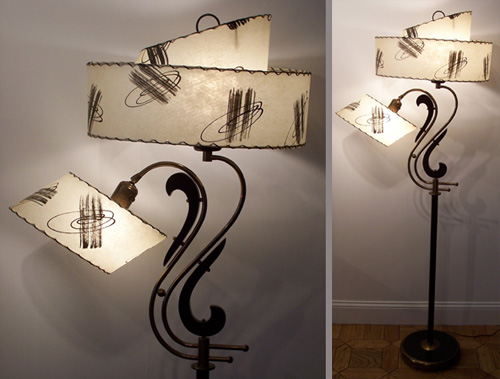
Floor Lamp with Fiberglass Shades – Majestic Lamp Co. – circa 1955
I have to admit I can go more than little crazy about vintage mid-century lamps! In fact, during the recent move of our shop we found hundreds of them – the darn things were just stuck everywhere – many of which we forgot we even had. You see though, I just can’t pass up a cool lamp, so they accumulate. Sure, we sell many of them but I seem to acquire them just as fast.
From the strange to the elegant, the 1950’s and 60’s were the true heyday of fabulous lamps. Companies like Majestic and Aladdin produced lamps in the 1950’s which redefined the purpose of lighting as design and decorating elements. Even our own Blenko Glass got into the act by the mid-50’s and made some of the most gorgeous lamps which have survived the test of time and are just as elegant today as they were then.
So, I thought I’d share a few of my current favorites – Let There Be Lamps!
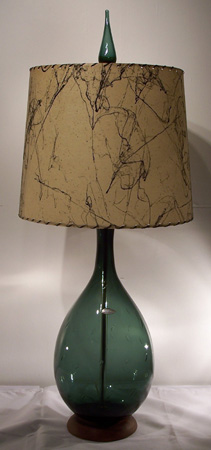
Controlled Bubble Lamp in Charcoal with Finial – Blenko Glass Co. – 1960-61
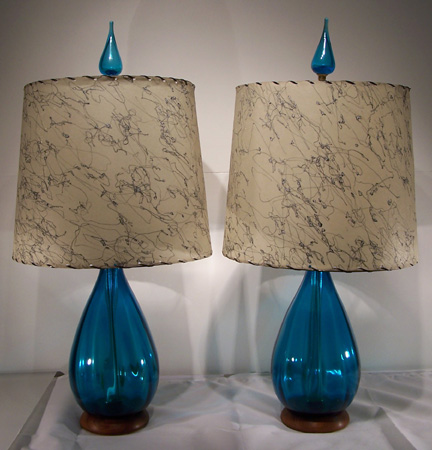
Turquoise Lamp Pair – Blenko Glass Co. – circa 1956
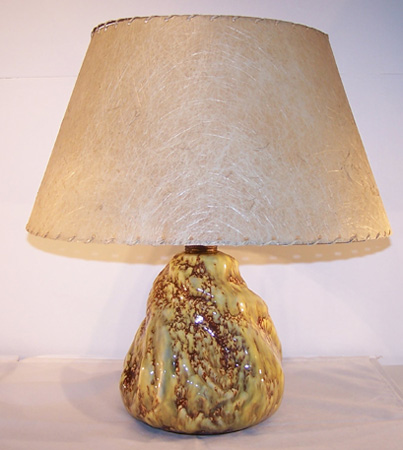
Organic Pottery Lamp with Fiberglass Shade – Aladdin Lamp Co. – circa 1950’s
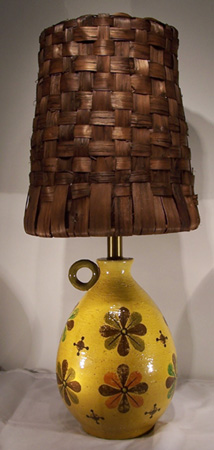
Pottery Lamp with Original Woven Fiber Shade – Rosenthal-Netter (Italy) – circa early 1960’s
